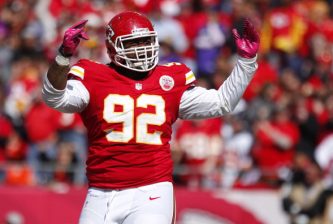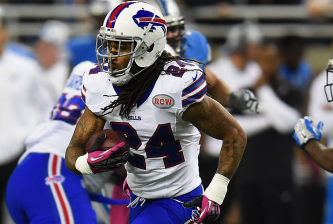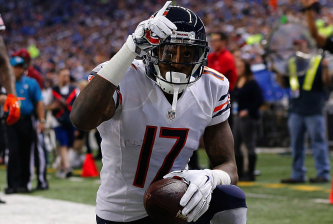The following is a sponsored post for Samsung VR.
When we think about recent advancements in football technology, we tend to think about things like pylon cams, embedded sensors in shoulder pads tracking players’ movements and speed, and improvements in helmet safety. But in terms of how the game is actually being played on the field, all signs point to virtual reality becoming the most impactful technology advancement in recent history. The fast adoption of virtual reality is no surprise, as coaches and players look to capitalize on the most realistic and immersive experience possible when preparing for a specific situation or opponent.
VICELAND, in conjunction with Samsung, took a deep dive into how virtual reality is changing game preparation in the Beyond The Frame series. In the most recent episode, Chasing Perfection, VICELAND chronicled the technology’s deployment at Texas Tech, one of the most prolific, fast-paced, and high-octane offenses in college football.
Texas Tech Head Coach Kliff Kingsbury, a former quarterback with history managing a pass-happy, quick-trigger offense, certainly sees value in using VR to augment traditional coaching elements.
“I think football is perfect for virtual reality because we can only practice so many reps out on the field. The more we can put in those situations through vitual reality the better and the quicker it comes to them and if you have that, you have a chance every Saturday.”
Game film has long been a staple of preparing for an upcoming game. At the higher levels of football, the ability to evaluate the All-22 footage provides an ever better perspective of an opponent’s tendencies. As valuable as game film study can be, teams are finding it doesn’t equate to the VR experience that has been quickly become a game changer for over 20 colleges and pro teams.
Derek Belch, Co-founder and CEO of STRIVR Labs who has been pioneering the usage of VR in football, sees the adoption of VR as a key competitive advantage for teams.
“90% of the battle of players at the highest levels—college and the NFL—is just knowing what to do. It’s not physically doing it. Everybody’s big, fast and strong. There’s really only a few that stand out relative to the competition. But if you know where to go with the ball, or what to do on your assignment quicker than your opponent, odds are you’re going to win.”
This difference isn’t subtle either. First person, 360-degree high definition footage documenting specific alignments, personnel groupings, and player tendencies allow for a much more vivid training scenario compared to footage taken from the sideline or end zone. To some degree, it’s the same dramatic change in experience that revolutionized action video games, as players preferred the realistic experience of the first person point of view.
With limited amount of time on the practice field as well as the film room, the ability to have a training tool as robust as virtual reality available through your existing Samsung phone, combined with Samsung’s Gear VR headset, can be a huge competitive advantage. The convenience and accessibility of being able to study for an upcoming game away from a team facility elevate the amount of time a player can prepare for a specific opponent, in addition to the value of the more immersive experience.
Over 20 football teams at both the college and pro levels are using virtual reality to work on the mental side of sports, a number that has been on the rise as more teams get a first-hand look at the technology. It’s not hard to imagine that in the not too distant future — given the enthusiastic response of using VR, as well as the affordable price point of the hardware itself (the Samsung headset is under $100) — the vast majority of NFL and college programs will rely on the technology to prepare each week for a new opponent. Given the passion at the high school level and possible deployments for other sports, virtual reality is poised to become a staple of competitive sports going forward.
It works pretty well for us as fans, too. No longer will we be confined by the camera angles that the broadcasters want us to see. For many years the All-22 film was only available to NFL personnel, which is no longer the case. It’s likely that despite the initial focus on improving game preparation, uses for game broadcasts and other fan-centric deployments will materialize, bringing a much more robust and immersive experience to fans.
As technology evolves, we need to evolve along with it. There’s no reason for an athlete to keep training the same way because that’s the way it’s always happened. If there’s a better way, it should be taken advantage of. Not that long ago water breaks were frowned upon, playbooks were nonexistent, game film was never watched by the players themselves, and communicating play-calls required a substitute every play. It’s hard to think of the days where some of these things were not part of the fabric of football, and by the look of the enthusiasm for VR from pro teams, it’s likely virtual reality is the newest advancement that will become the status quo in chasing perfection on the field.
To explore Beyond the Frame documentaries go here
To explore Beyond the Frame VR experiences go here





